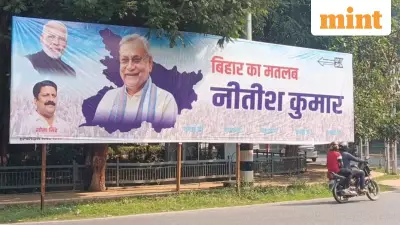
As India observes National Press Day on November 16, 2025, the country's media landscape presents a complex picture of cautious improvement amid persistent challenges. The latest World Press Freedom Index reveals India has moved up eight positions to rank 151st among 180 countries, offering a glimmer of hope while underscoring the ongoing struggles faced by journalists nationwide.
National Press Day: Celebrating Media Independence
November 16 marks a significant milestone in India's media history, commemorating the establishment of the Press Council of India (PCI) which began operations on this day in 1966. This year's theme focuses on safeguarding press credibility amidst rising misinformation, reflecting the critical need for accurate and ethical reporting in today's digital age.
The PCI stands as a statutory autonomous body initially constituted under the Indian Press Council Act of 1965. After the original legislation was repealed in 1975, the Council was reconstituted in 1979 under the Press Council Act of 1978. The organization serves dual objectives: preserving press freedom while maintaining and improving standards of newspapers and news agencies across India.
What makes the PCI particularly unique globally is its authority to exercise control even over state instruments when safeguarding press independence. Headed by a retired Supreme Court judge, the Council comprises 28 members and operates under specific provisions outlined in section 5(3) of the Press Council Act, 1978.
India's Media Regulation Framework
India employs a comprehensive three-tier system to govern media content across different platforms:
Print Media: The Press Council of India regulates print media through its Norms of Journalistic Conduct. The Council can initiate inquiries under Section 14, resulting in warnings, admonishments, or censures against newspapers, editors, or journalists found violating established standards.
Television Media: Governed by the Cable Television Networks (Regulation) Act of 1995, television content must adhere to a Programme Code. The 2021 Amendment Rules established a three-tier grievance redressal mechanism to handle complaints about obscene, defamatory, false, or suggestive content.
Digital Media: The Information Technology (Intermediary Guidelines and Digital Media Ethics Code) Rules of 2021 govern digital platforms. These rules mandate age-based content classification, child safety safeguards, and compliance with Indian laws, while Section 69A grants the government power to block websites or social media content threatening national sovereignty and security.
Global Press Freedom Landscape 2025
The 2025 World Press Freedom Index, compiled by Reporters Without Borders (RSF), paints a concerning global picture. For the first time in history, the international press freedom situation is described as difficult, with economic pressures compounding existing socio-political and legal challenges facing journalists worldwide.
Norway maintains its top position with an impressive global score of 92.31, followed closely by Estonia (89.46) and the Netherlands (88.64). These Scandinavian and European nations benefit from strong legal protections and diverse media economies that support independent journalism.
At the opposite end of the spectrum, Eritrea ranks lowest with a meager score of 11.32, preceded by North Korea (12.64) and China (14.80). These countries demonstrate worrying deterioration in economic conditions for media alongside persistent polarization and repression.
India's improved ranking to 151st position comes with a total score of 32.96, reflecting some progress but still indicating significant challenges. The country's performance must be understood within broader global trends affecting press freedom.
Critical Factors Affecting Press Freedom Worldwide
RSF's methodology defines press freedom as the ability of journalists to select, produce, and disseminate news in the public interest independent of political, economic, legal, and social interference. The organization evaluates countries based on both quantitative data about abuses against journalists and qualitative analysis from press freedom specialists.
Economic instability threatens media outlets in 160 of the 180 countries assessed. The United States (ranked 57th, down 2 places), Tunisia (129th, down 11 places), and Argentina (87th, down 21 places) show particularly concerning financial challenges for journalists.
Political instability further exacerbates media economy problems, with notable declines in Israel (112th, down 11 places) and ongoing difficulties in Palestine (163rd). Media ownership concentration threatens diversity in 46 countries, including relatively well-ranked nations like Australia (29th), Canada (21st), and France (25th, down 4 places).
Editorial interference remains widespread, reported in over half of the evaluated countries (92 out of 180). In 21 nations—including Rwanda (146th), United Arab Emirates (164th), and Vietnam (173rd)—media owners routinely interfere with editorial decisions, compromising journalistic independence.
Constitutional Framework for Press Freedom in India
The foundation for press freedom in India rests on Article 19(1)(a) of the Constitution, which guarantees freedom of speech and expression exclusively to citizens. This fundamental right exists alongside other protected freedoms including peaceful assembly, association formation, free movement throughout India, and professional practice.
However, these freedoms are not absolute. Article 19(2) establishes reasonable restrictions under specific circumstances including security of the state, friendly relations with foreign countries, public order, decency and morality, contempt of court, defamation, incitement to offense, and sovereignty and integrity of India.
As India marks National Press Day 2025, the improved but still challenging press freedom ranking underscores the ongoing balancing act between media independence and responsible journalism. The dual focus on celebrating press freedom while addressing credibility concerns reflects the complex reality facing Indian media in an era of digital transformation and information overload.





